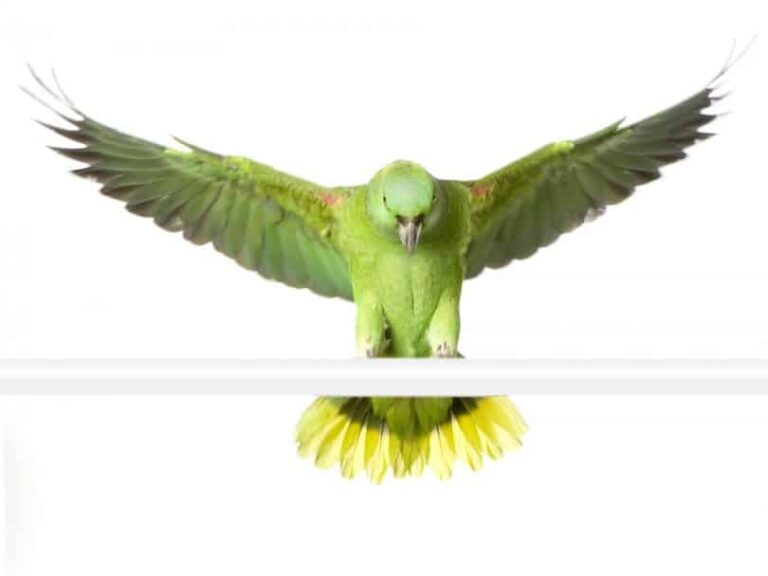Parrots
Psittacines, commonly and very well known as Parrots belong to the Psittaciformes order, which consists of nearly 372 species and 86 genera. Such a varied variety of species are widespread in many places, especially in temperate zones in the Southern Hemisphere, Australia, and South America. The whole order of this species is expected to have originated from Gondwanaland situated in Australia.

Description
The colorful plumage and the talking ability of this bird make it popular among the pet lovers. The parrots have a stout body, short neck and strong legs with zygodactyl feet. The beak is curved, strong but short, and they use it to break their favorite seeds or fruits. Different species are found in different sizes and colors.
Smallest Parrot In the World – Pygmy Parrot
The smallest species of parrot group is the Parrot Pigmy which is 8.6 cm long and weighs 11.5 g,
Hyacinth Macaw
The largest species is the Hyacinth Macaw with a length of 95cm, stretched from the top of the head to the pointed tail tip. The body colors are the most attractive part of these birds; some are single whereas some are multi-colored. Some can be found in green, whereas some are a combination of blue and yellow. The most beautiful parrot is the rainbow colored species.
Habitat
Generally, the parrots can be seen in tropical and subtropical regions of the world. The regions like South–East Asia, Oceania, Africa, Australia and South America witness a large and diverse species of Parrots. Some endemic species are believed to be originated from the Pacific and Caribbean Islands. Some species prefer a cool and temperate climate, and inhabits such areas as New Zealand and America. The stable population of parrots can be seen in Belgium, Greece, Spain and the United Kingdom.
Reproduction
Parrots are monogamous by behavior. The process of mating and egg laying in all the species is somewhat similar. Mostly all the parrot species make nests in a cavity or a hole in the tree. The female bird lays white eggs until the clutch has around 3 to 7 eggs, which is incubated for 25 to 30 days. In some species, both the male and female birds take the responsibility of incubation. The young ones may stay in the nest for 7 months before they leave the nest and fly independently.
How to Grow At Home
Food
Parrots basically eat fruits, vegetables, grains, pollens, nectar, seeds and leaf buds. There is no common food for the different types of parrots. Some eat rodents and insects, whereas some stay alive by eating nectar and flower buds. At home, they should be provided with nutritious food, or else, it may affect their health and lifespan. The recommended food for parrots is the pellet diet. A good quality parrot food mix like seed or pellet diet mix is available. Along with that, fresh vegetables and fruits should also be given for a well-balanced diet. Provide fresh water every day, which is a vital part of a healthy diet.
Cage
Due to the difference in sizes of different parrot species, the cage size for each species will also differ. The cage should be spacious enough for your pet to flap its wings and fly around. There should also be enough space in the cage to place perches, toys and food vessels. Cages with horizontal bars are good to keep them busy, as they will keep on climbing up and down the bars. Care should be taken to avoid spacing between the bars, so that the bird will not choke its head or feet through the space.
Care
Parrots are very intelligent and loving creatures. They should be always given attention and care, or they can turn aggressive. Clean the cage and the vessels with disinfectant and mild detergents. Provide enough sunlight and water. Spend time with your pet for at least 2 to 3 hours a day.

Having discovered a fondness for insects while pursuing her degree in Biology, Randi Jones was quite bugged to know that people usually dismissed these little creatures as “creepy-crawlies”.







